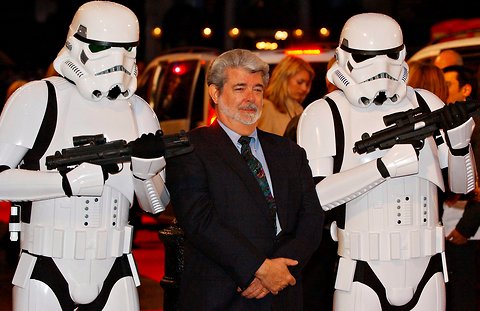On Tuesday, Viacom and Amazon announced an extensive, multiyear deal that includes granting Amazon exclusive rights to Nickelodeon’s preschool shows. The agreement — which one analyst estimated to be worth several hundred million dollars — signals that the heated battle for online streaming rights has increasingly moved to television’s youngest viewers.
In April, Netflix said it would allow its deal with Viacom to expire. Then last month Netflix struck a deal with the Walt Disney Company to gain exclusive rights to stream Disney Jr. series like “Jake and the Never Land Pirates” and Disney XD’s “Tron: Uprising.” In 2011, Netflix introduced its “Just for Kids” menu with a selection of shows and movies aimed at children, or parents looking to entertain them.
That put pressure on Amazon to secure children’s programming for its Amazon Prime subscription service, which it hopes will compete with Netflix and Hulu in the streaming video market.
As part of the deal announced on Tuesday, Amazon also secured the rights to stream shows that are first broadcast on Viacom’s Comedy Central and MTV, including some episodes of “Jersey Shore” and “Teen Mom 2.” But the key to the agreement is making Amazon’s Prime Instant Video subscription service the exclusive outlet for preschool-aged children to watch old episodes of shows like “Dora the Explorer,” “Go, Diego, Go!” and “The Backyardigans.” Since children do not mind reruns as much as adults do, deals for these types of shows often cost less than series aimed at adults.
Bill Carr, Amazon’s vice president of digital video and music, said in a statement that children’s programming was “one of the most-watched TV genres on Prime Instant Video.”
In a letter to customers, Jeffrey P. Bezos, Amazon’s chief executive, said the deal gave Prime Instant Video more than 250 TV seasons and more than 3,900 episodes from Nick Jr., Nickelodeon, MTV and Comedy Central. “We have increased by 55 percent the number of episodes available to top Prime shows for kids,” Mr. Bezos wrote. The deal, he said, added “400 episodes of new shows such as ‘Team Umizoomi,’ ‘Bubble Guppies,’ ‘Victorious,’ ‘Big Time Rush’ and ‘Drake Josh.’”
Amazon Prime members pay $79 a year for two-day free shipping, monthly Kindle e-book rentals and video streaming. The company has said it has millions of Prime subscribers but has declined to give an exact figure. Netflix has 27 million streaming subscribers in the United States. Hulu’s subscription service, Hulu Plus, has about four million.
“Amazon has created a unique, brand-friendly environment for streaming entertainment and consumer products,” said Philippe Dauman, chief executive of Viacom. He added: “We are excited to work with Amazon to bring customers shows they love.”
In the past, Viacom has had a complicated relationship with subscription video on-demand services like Netflix. After an unexpected ratings drop at its Nickelodeon channel last year, Viacom partly blamed a glut of old episodes available to Netflix for cannibalizing the cable channel’s ratings. Children increasingly watch shows via streaming, but revenue from digital syndication deals still doesn’t come close to that provided by advertisers who pay to reach viewers the old-fashioned way.
In the quarter that ended March 31, advertising revenue at Nickelodeon and Nick. Jr. rose 2 percent as the network rebounded with preschool audiences. Mr. Dauman said a fresh pipeline of shows had improved Nickelodeon’s ratings. As advertising revenue grows on the cable channel, Mr. Dauman has defended deals with digital subscription streaming services as good for both parties. “We’re getting nice revenues through these subscription” video-on-demand deals, he recently told analysts.
Viacom will need to make an additional $125 million to $150 million in streaming deals in fiscal year 2013 to meet its goal of 10 percent affiliate growth, according to Bernstein Research.
Amazon has rapidly built its streaming service to compete with more established services, namely Netflix and Hulu. The Viacom deal is the latest example of the online retailing giant’s swooping in to gain streaming rights after deals with Netflix expire.
After Netflix declined to renew its rights to popular cable series like “Pawn Stars,” Amazon jumped in. In December, Amazon struck a deal with Time Warner to gain the exclusive streaming rights to TNT’s “The Closer” and “Falling Skies.” Netflix got exclusive rights to TNT’s “Dallas.”
Amazon and CBS have a deal that will let Prime subscribers watch “Under the Dome,” a new science fiction series based on the Stephen King novel, four days after episodes are broadcast on CBS beginning June 24.

Article source: http://www.nytimes.com/2013/06/05/business/media/viacom-strikes-deal-with-amazon-to-stream-childrens-shows.html?partner=rss&emc=rss
